As the temperature drops and winter approaches, all plant lovers face the challenge of transitioning their beloved tropical plants from the outdoor garden to the cozy confines of their homes. While tropical plants thrive in warm and humid outdoor conditions, they can struggle when exposed to the dry indoor environment during the colder months.
However, with some care and attention, we can ensure that our tropical plants not only survive but also thrive indoors throughout the winter season. In this comprehensive guide, we’ll explore seven essential keys to successfully caring for our tropical plants indoors.
Choose the Right Location
One of the most critical factors in helping tropical plants survive indoors during the winter is selecting the right location. Here are some considerations:
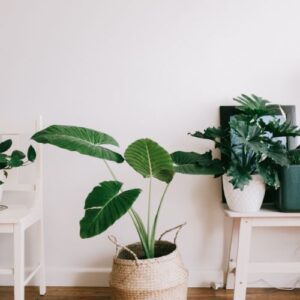
Indirect Sunlight
Most tropical plants prefer bright, indirect sunlight. Place them near a south or west-facing window where they can receive plenty of filtered light. Consider using sheer curtains or blinds to protect them from harsh direct sunlight.
Temperature
Maintain a consistent temperature between 65°F and 75°F (18°C to 24°C) for most tropical plants. Avoid placing them near drafts, radiators, or heating vents, as extreme temperature fluctuations can stress the plants.
Humidity
Tropical plants thrive in humid conditions. Use a humidity tray or a room humidifier to increase moisture levels around your plants. Arranging plants nearby can also establish a microenvironment characterized by increased humidity.
Adjust Your Watering Routine
During the winter, the indoor air tends to be drier, affecting your tropical plant’s water requirements. Follow these guidelines:

Monitor Soil Moisture
Check the moisture level in the soil regularly by inserting your finger about an inch deep. When the top inch of soil feels to be dry then water the plants. Be cautious not to overwater, as many tropical plants are susceptible to root rot.
Use Room-Temperature Water
Opt for room-temperature water to avoid potentially shocking the plant’s roots, as cold water can have this effect.
Watering Frequency
Adjust the frequency of watering based on your plant’s specific needs. Some tropical plants may require more frequent watering than others.
Maintain Proper Humidity
As mentioned earlier, tropical plants thrive in high humidity. Here are some ways to maintain the right humidity levels:
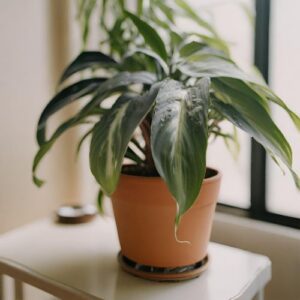
Misting
Regularly mist your plants with water to increase humidity around them. Focus on misting in the morning to allow the leaves to dry before nighttime.
Humidity Trays
Place shallow trays filled with water and pebbles near your plants. A more humid environment will be created as the water evaporates.
Grouping Plants
Grouping your tropical plants can create a mini-humid microclimate, as plants release moisture through transpiration.
Pruning and Grooming
Winter is an excellent time to attend to your tropical plants’ grooming and maintenance needs:
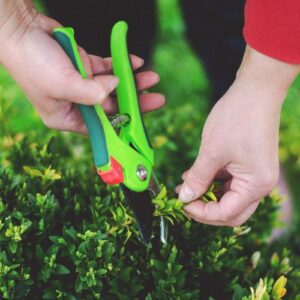
Remove Dead or Yellowing Leaves
Prune away dead or yellowing leaves to encourage new growth and prevent the spread of diseases.
Inspect for Pests
Regularly inspect your plants for signs of pests such as mealybugs, spider mites, or aphids. If you spot any, take prompt action to eliminate them.
Fertilization
When it comes to fertilization, it’s advisable to cut back or completely halt the process in the winter months, as many tropical plants typically experience a slowdown in growth during this period. You can then resume fertilizing in the spring when their growth rate increases once more.
Provide Adequate Air Circulation
While it’s important to protect your tropical plants from drafts, stagnant air can lead to problems like mold and mildew. Ensure proper air circulation by:

Using a Fan
If possible, use a gentle fan on a low setting to provide a gentle breeze. This helps prevent the buildup of stagnant air and discourages pests.
Rotate Your Plants
Periodically rotate your plants to ensure all sides receive adequate airflow and light.
Consider Container Size and Type
Choosing the right container and potting mix is essential for the well-being of your plants:
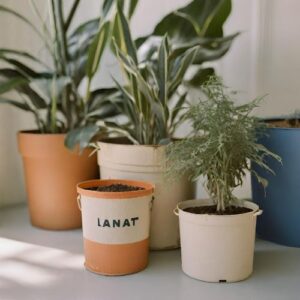
Appropriate Pot Size
Select a pot that is not too large for your plant. A slightly snug fit encourages healthy root development.
Well-Draining Soil
Use a well-draining potting mix designed for these plants. This prevents waterlogged soil, which may result in root rot.
Pot with Drainage Holes
Ensure that your pot has adequate drainage holes to allow excess water to escape.
Watch for Signs of Stress
Finally, it’s essential to pay attention to your plant’s behavior and appearance:
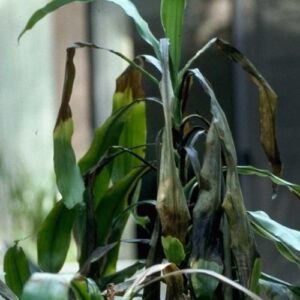
Wilting or Drooping
If your plant’s leaves wilting or drooping, it may need more water or better humidity.
Yellowing Leaves
Yellowing leaves may be a sign of excessive watering or inadequate drainage. Adjust your watering routine and check the pot’s drainage.
Slow Growth
Reduced growth during the winter months is normal for many tropical plants. However, if you notice excessive yellowing, stunted growth, or other signs of stress, be patient. Plants take time to recover. Even after you’ve addressed the issue, it may take some time for them to bounce back to full health.
Conclusion
Bringing your tropical plants indoors for the winter can be a rewarding experience when you provide them with the care and attention they need. By choosing the right location, adjusting your watering routine, maintaining proper humidity, pruning, and grooming, providing adequate air circulation, selecting suitable containers, and watching for signs of stress, you can help your plants not only survive but also thrive during the winter months. With these seven tips in mind, you can enjoy the lush beauty of your plants year-round, even when the weather outside is cold and frosty. Further, you can ask me in the comment section if you have any questions related to this.
Do read: Insectivorous plant, Periwinkle Plant.
FAQs
Q1. What are tropical plants, and why do they need special care during the winter indoors?
A. Tropical plants originate from warm and humid regions. When brought indoors during the winter, they face challenges related to lower light levels, reduced humidity, and temperature fluctuations. Special care is needed to replicate their natural environment.
Q2. How often should I water my tropical plants during the winter indoors?
A. The frequency of watering depends on factors like the type of plant, pot size, and indoor conditions. Check the soil’s moisture level regularly and water when the top inch feels dry, usually less often than in the growing season.
Q3. Can I use tap water for my tropical plants during the winter indoors?
A. Using tap water is generally fine, but it’s best to allow it to sit for 24 hours to let chlorine and fluoride dissipate. Room-temperature water is preferable to prevent shocking the roots of the plants.
Q4. Should I fertilize my tropical plants in the winter indoors?
A. Most tropical plants experience reduced growth during the winter, so it’s best to reduce or eliminate fertilization. You can resume fertilizing them when they begin actively growing again in the spring.
Q5. How can I increase humidity around my tropical plants indoors during the winter?
A. You can increase humidity by misting the plants, using humidity trays with water and pebbles, grouping plants together, or using a room humidifier.
Q6. What’s the ideal temperature range for tropical plants indoors in the winter?
A.Maintain a consistent temperature between 65°F and 75°F (18°C to 24°C) for most tropical plants. You must avoid exposing them to extreme temperature fluctuations and drafts.
Q7. How do I prevent common winter issues like yellowing leaves and pests on my tropical plants?
A. Prevent yellowing leaves by adjusting your watering routine, providing adequate humidity, and ensuring proper drainage. Regularly inspect your plants for pests and take prompt action if you spot any, using appropriate methods like neem oil or insecticidal soap.

Very nice 👍